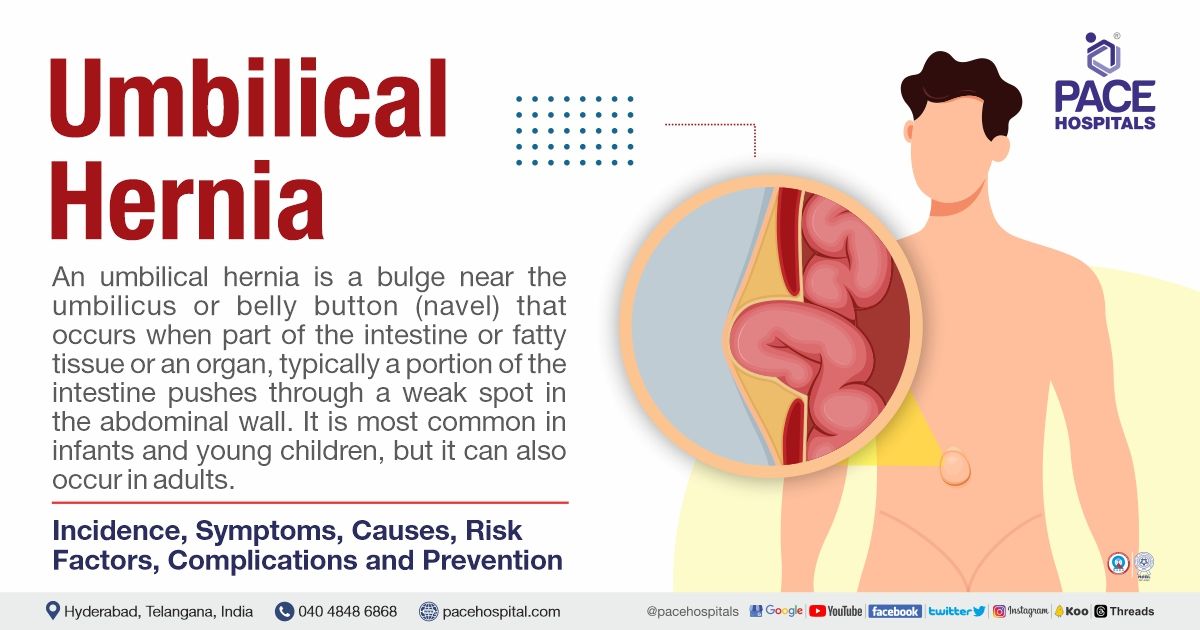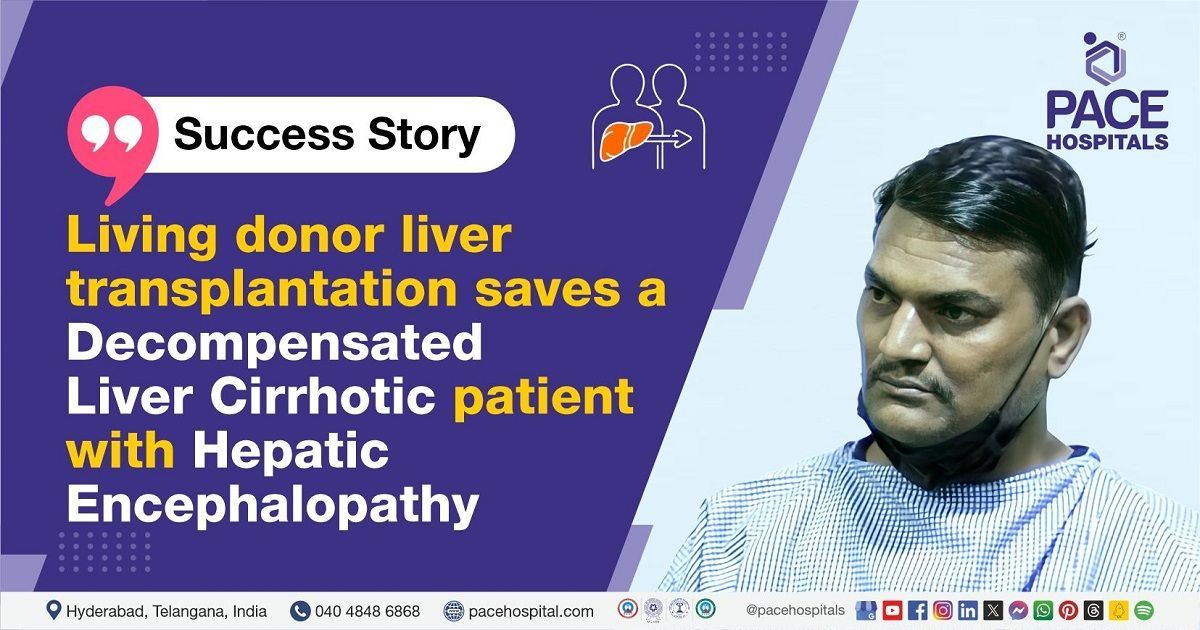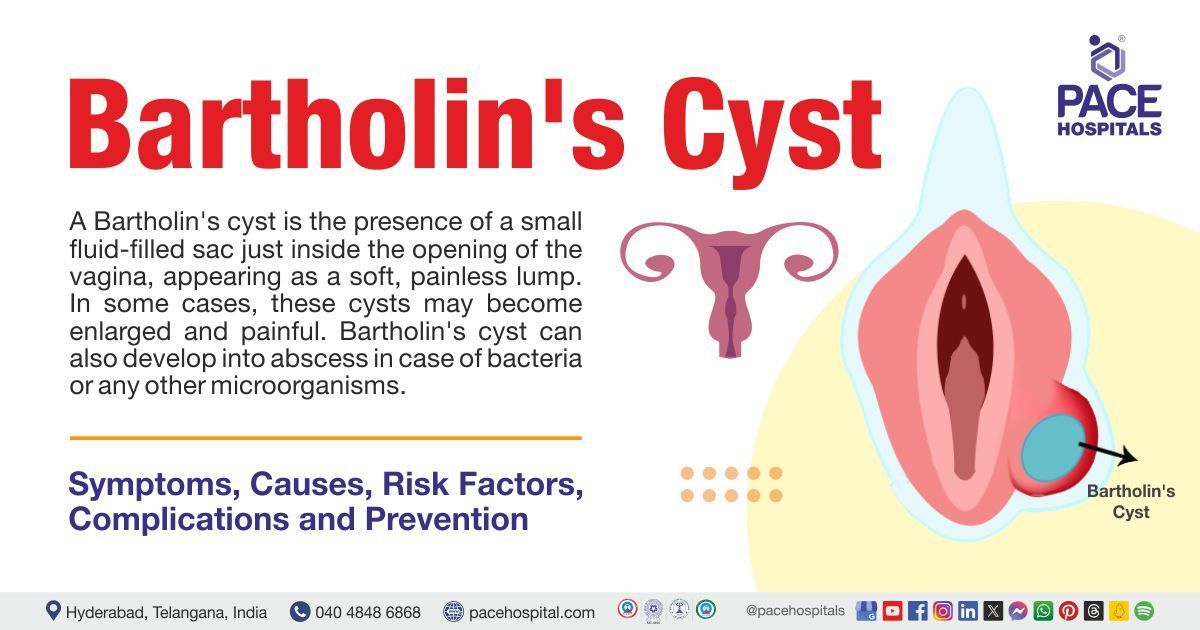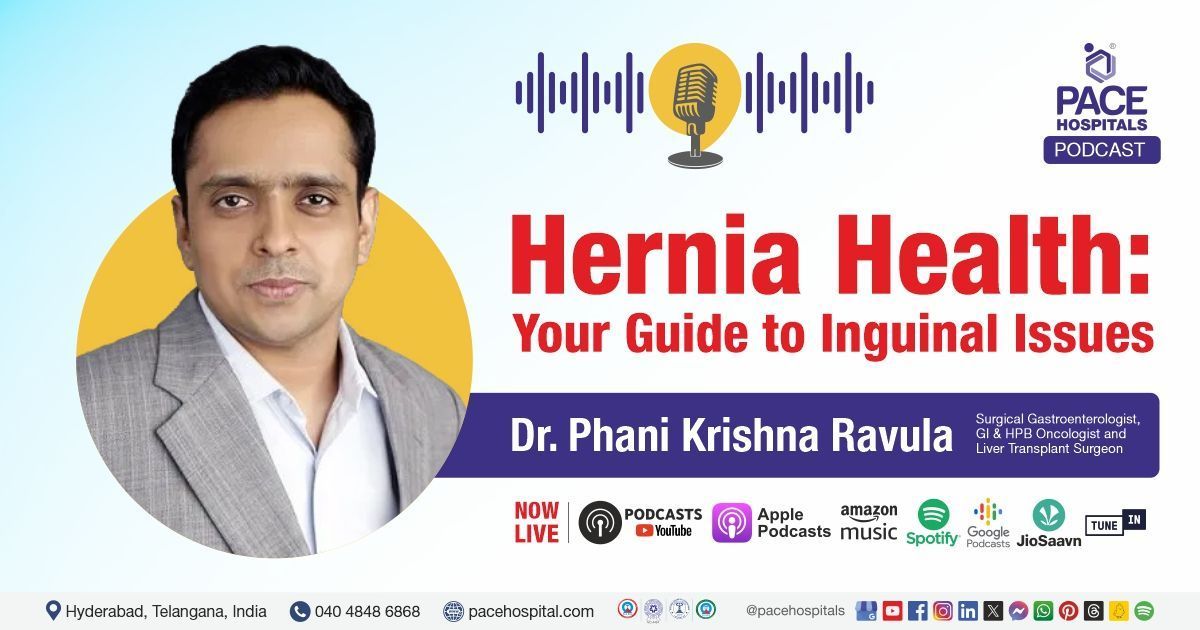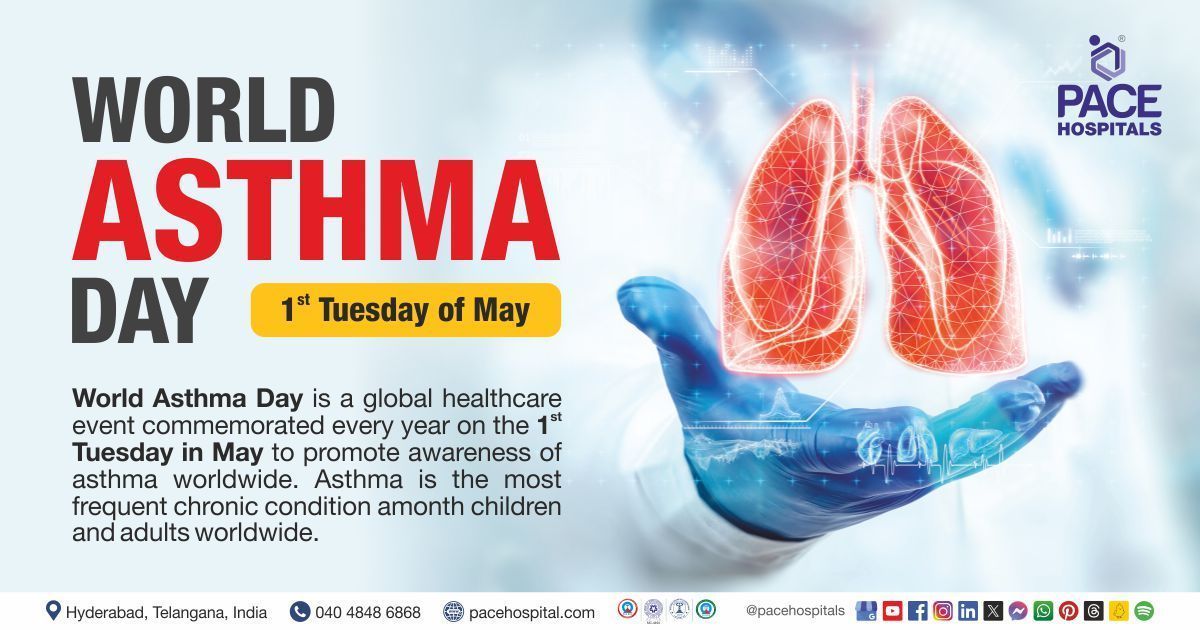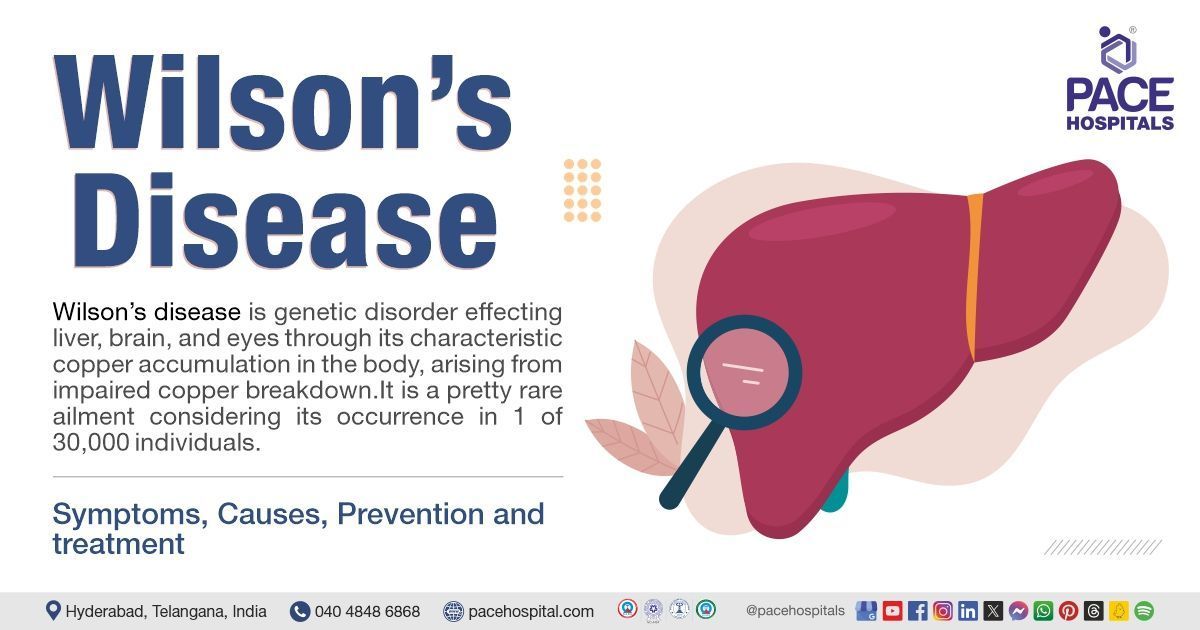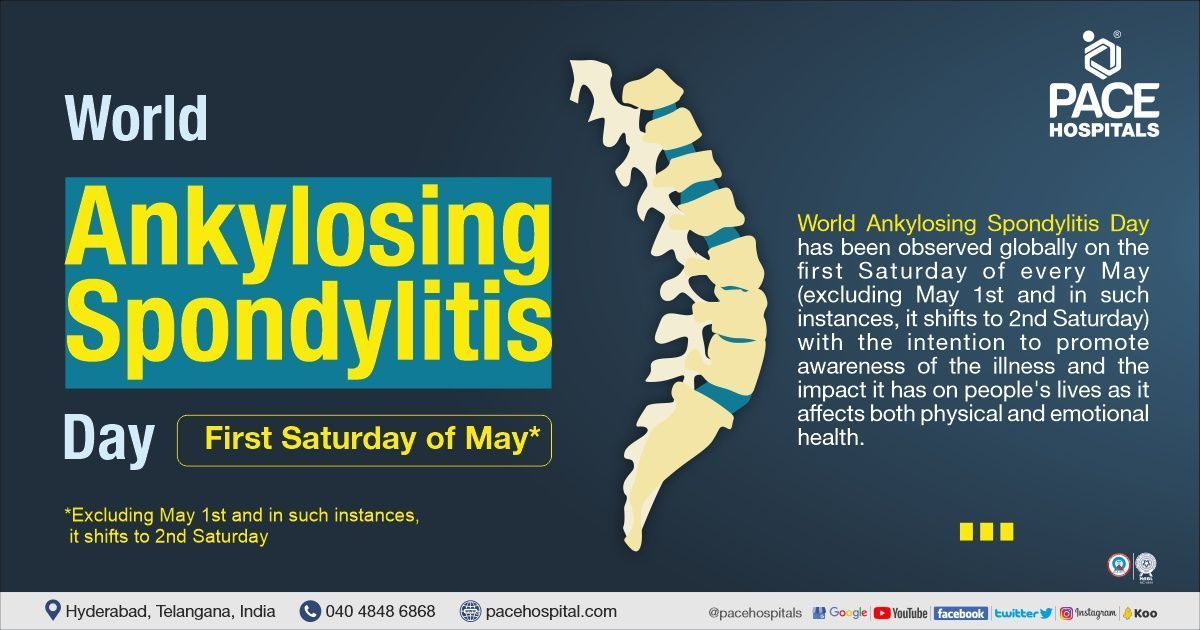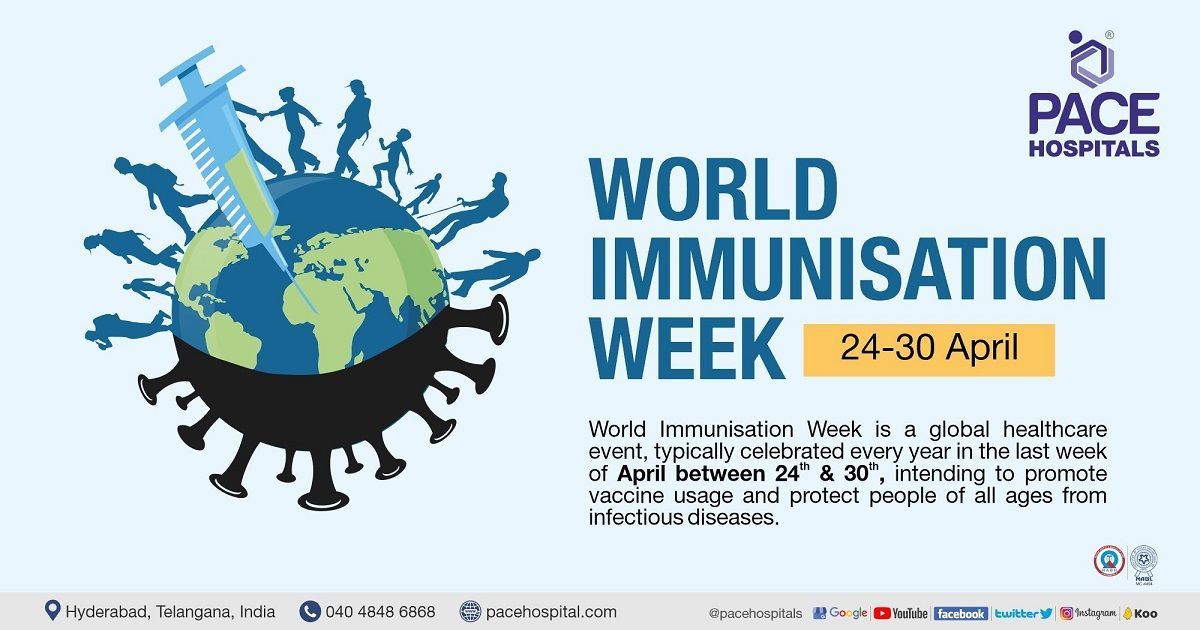Umbilical hernia - Symptoms, Causes, Complications and Prevention
Umbilical hernia definition
A ventral hernia that is present at or close to the umbilicus (navel) is known as an umbilical hernia. An umbilical hernia occurs when fat, tissue, or an organ, typically a portion of the intestine, pushes or bumps through a weak spot in the abdominal wall near to the belly button.
Usually, an umbilical hernia develops when the layers of the abdominal wall do not fuse at the time of birth ; umbilical hernias aren’t serious and typically don't cause any major health problems.
Umbilical hernia meaning
The umbilical cord is a channel that connects a mother and the foetus and allows oxygen and nutrients from the mother to the foetus while the baby is in the mother’s womb. Usually, the baby’s umbilical cords pass through the small opening that is present in between the abdominal muscles. In most cases, this opening will be closed soon after the birth.
Still, in some cases, these abdominal wall layers don't fuse or joint completely, resulting in hernia formation. Hence, it is referred to as an umbilical hernia. According to the European Hernia Society classification, the location of the umbilical hernia is from 3 cm above (supra umbilical hernia) to 3 cm below the navel region (umbilicus).
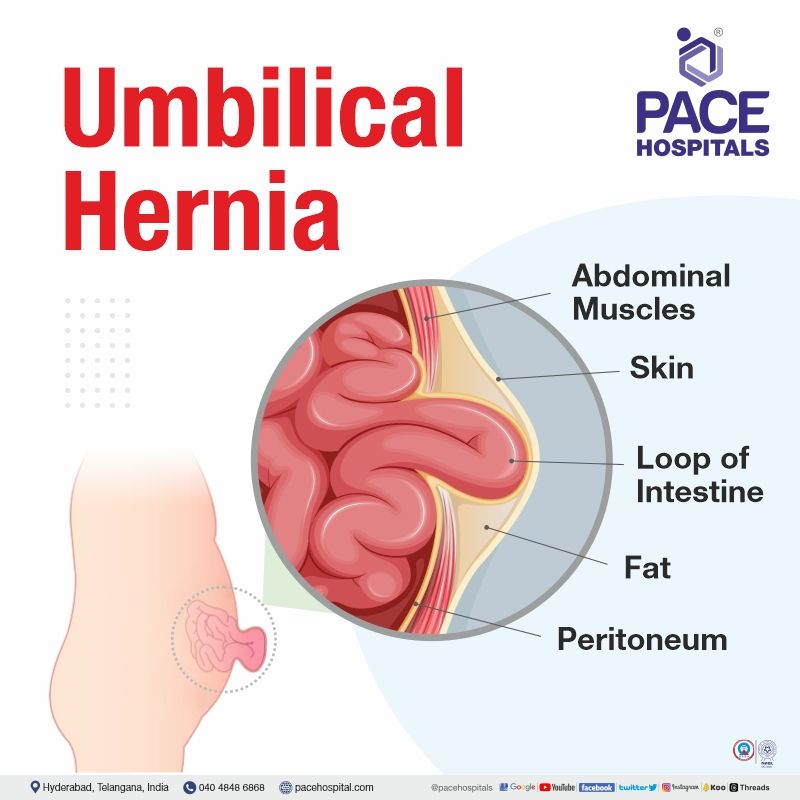
Incidence of umbilical hernia
Umbilical hernias are the second most common type of hernia in adults, and are particularly the most common type in newborns and babies.
Umbilical hernias affect 20% of newborns, and 90% of them will naturally close or heal by the time the child is five years old. According to the American College of Surgeons, umbilical hernias account for about 10% of adult hernias. Adults experience these hernias at the age of 60 years or older.
Umbilical hernias are commonly seen in 2% of the adult population, but they may occur more frequently in obese multiparous women and cirrhotic individuals. Umbilical hernia can occur in up to 20% of cirrhotic patients with ascites. With a 3:1 ratio, umbilical hernia in women are more seemingly to have it. Incarcerated umbilical hernias are most commonly seen in males, whereas asymptomatic reducible umbilical hernias are seen in females.
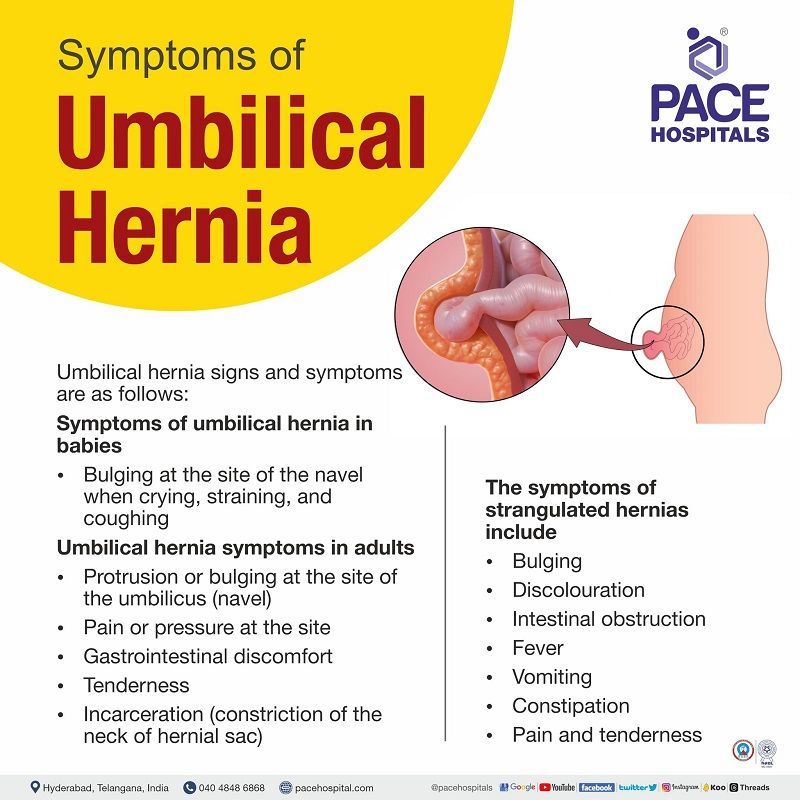
Umbilical hernia symptoms
Umbilical hernia signs and symptoms are as follows:
Symptoms of umbilical hernia in babies: Umbilical hernia baby experience bulging at the site of the navel when crying, straining and coughing.
Umbilical hernia symptoms in adults
- Protrusion or bulging at the site of the umbilicus (navel).
- Pain or pressure at the site
- Gastrointestinal discomfort
- Tenderness
- Incarceration (constriction of the neck of hernial sac).
Some hernias might lead to strangulation (cessation of blood supply to the tissue or organ that has bulged out through the navel). The symptoms of strangulated hernias include:
- Bulging
- Discolouration
- Intestinal obstruction
- Fever
- Vomiting
- Constipation
- Pain and tenderness
Umbilical hernia emergency symptoms
An umbilical hernia emergency is referred to as an emergency condition that needs immediate treatment. In most cases, umbilical hernias are not serious; whenever the blood supply to the tissue cuts off, it leads to strangulation (strangulated hernia).
Symptoms of this strangulated umbilical hernia include:
- Discoloured bulge
- Fever
- Vomiting
- Tenderness and pain at the affected site
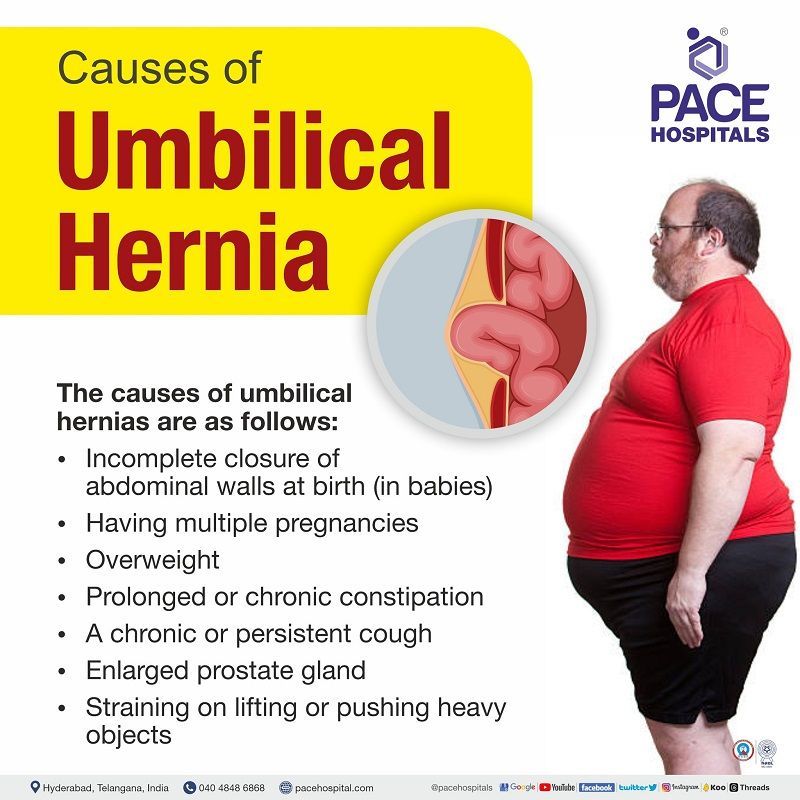
Umbilical hernia causes
The causes of umbilical hernias are as follows:
- Incomplete closure of abdominal walls at birth (in babies)
- Having multiple pregnancies
- Overweight
- Prolonged or chronic constipation that increases abdominal pressure
- A chronic or persistent cough that increases abdominal pressure
- Enlarged prostate gland, which leads to difficulty in urinating (in males)
- Ascites (excessive belly fluid)
- Straining on lifting or pushing heavy objects
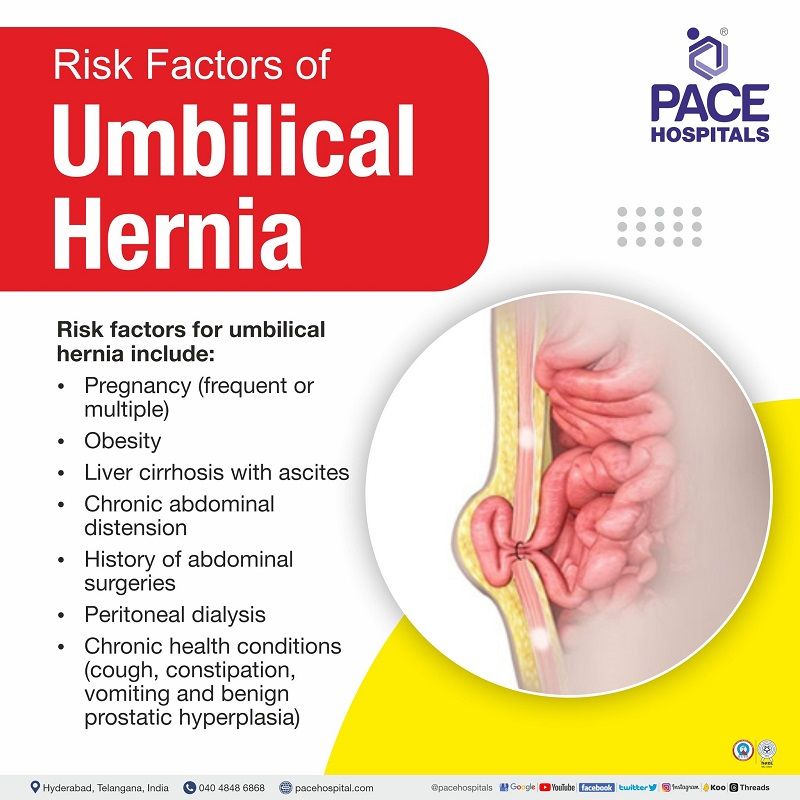
Risk factors of umbilical hernia
Risk factors for umbilical hernia include:
- Pregnancy (frequent or multiple): Women are more likely to develop umbilical hernias than men. Pregnancies may cause the umbilical hernia by raising the intra-abdominal pressure progressively.
- Obesity: Patients with overweight have an increased risk of umbilical hernia, as being overweight increases abdominal pressure.
- Liver cirrhosis with ascites (fluid accumulation in the belly region): Nearly 20% of patients suffering from liver cirrhosis associated with ascites might have the risk of developing an umbilical hernia due to the increased abdominal pressure, which is primarily caused by elevated abdominal fluid accumulation.
- Chronic abdominal distension: Abdominal distension, which is caused due to intestinal obstruction, might have the risk of developing a hernia.
- History of abdominal surgeries
- Long-term peritoneal dialysis: Peritoneal dialysis leads to an abdominal wall hernia, which is the common mechanical complication of peritoneal dialysis.
- Long-term health conditions (cough, constipation, vomiting and benign prostatic hyperplasia) : These conditions increase the strain on the abdominal wall muscles and lead to hernia.
Umbilical hernia complications
The complications of umbilical hernia include:
- Strangulation: The blood flow to a strangulated hernia has been interrupted. As a result, the tissue may become inflamed, infected and eventually die (tissue necrosis). Strangulation is a medical emergency and requires immediate medical or surgical treatment.
- Incarceration: Occurs when the hernia's protrusion (and its contents) become lodged in a weak spot of the abdominal wall. It may result in bowel obstruction, accompanied by excruciating pain, nausea, vomiting, and the inability to urinate.
- Infections: Inadequate blood supply to the abdominal wall might lead to severe pain and infections.
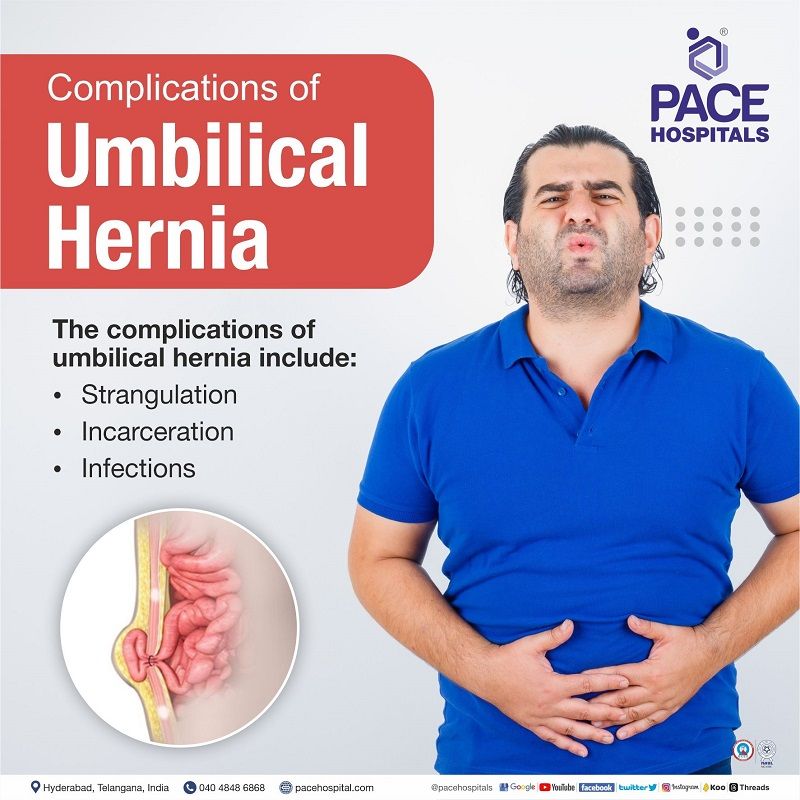
Umbilical hernia diagnosis
The diagnosis of umbilical hernia includes various approaches, such as:
- Thorough history taking (family, medical or medication histories) of an individual
- Physical examination
- Blood tests for infections
- Barium X-ray
- Ultrasonography (USG)
- Computed tomography (CT scan)
- Magnetic resonance imaging (MRI scan)
Umbilical hernia treatment
Treatment for umbilical hernias includes various approaches, such as:
- Lifestyle modifications
- Wait and watch approach
- Surgical approaches
- Suture repair
- Mesh repair
Suture repair: Suture repair includes:
- Primary suture repair
- Mayo technique
Mesh repair: Mesh repair can be performed by:
- Open approach
- Onlay method
- Sublay method
- Laparoscopic approach
- Transabdominal preperitoneal approach (TAPP)
- Intraperitoneal Onlay mesh technique (IPOM)
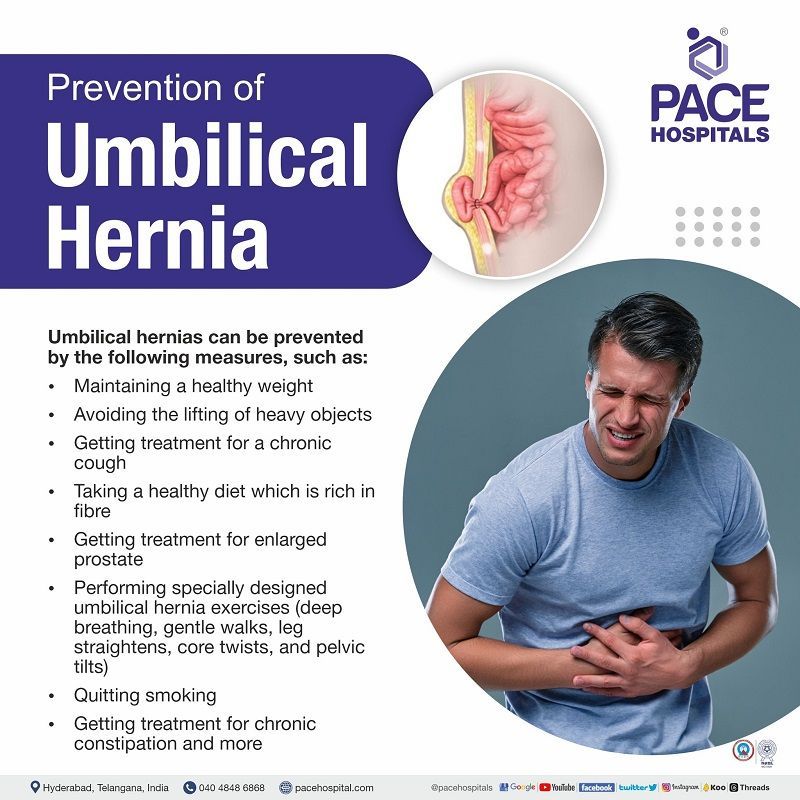
Umbilical hernia prevention
Umbilical hernias can be prevented by the following measures, such as:
- Avoid lifting heavy objects.
- Lose the additional weight and maintain a healthy weight.
- Avoid constipation and cure it when necessary to avoid straining during bowel movements.
- If the person has a chronic cough, treatment is needed for cough.
- Take a healthy diet (umbilical hernia diet) which is rich in fibre.
- Get treated for an enlarged prostate who struggles to urinate.
- Performing specially designed umbilical hernia exercises (deep breathing, gentle walks, leg straightens, core twists, and pelvic tilts) that are needed to build core strength for the fitness of abdominal muscles.
- Avoid or quit smoking. It is difficult to quit smoking, so get the doctor's cessation plan by talking to him.
- Learn proper lifting techniques for heavy goods.
Umbilical hernia dos and don’ts
The dos and don’ts for umbilical hernias are as follows:
Do's:
- Performing specially designed exercises (deep breathing, gentle walks, leg straightens, core twists, and pelvic tilts) that are needed to build core strength for the fitness of abdominal muscles.
- Taking a healthy diet that is rich in fibre.
- Maintaining a healthy weight.
Don’ts:
- Strenuous activities and heavy lifting.
- Straining during bowel movements.
- Driving until advisable.
- Smoking.
Paraumbilical hernia vs umbilical hernia | Difference between paraumbilical hernia and umbilical hernia
A para-umbilical hernia is the protrusion of a viscous material through the Linea alba that borders the umbilicus superiorly or inferiorly. It is also called an indirect umbilical hernia and commonly occurs in adults. Whereas, An umbilical hernia, often called a direct or true umbilical hernia, is commonly seen in neonates or infants and is also referred to as an infant umbilical hernia. In this condition, a symmetric protrusion is seen through the umbilical ring or umbilicus (navel).
Umbilical vs ventral hernia | Difference between umbilical hernia and ventral hernia
Any hernia that develops through the front abdominal muscles is referred to as a ventral hernia. The term "ventral" describes the front of the body or belly. Whereas, an umbilical hernia is a type of ventral hernia that occurs at the weak spot of the belly button or navel region.
FAQs (frequently asked questions on Umbilical hernias)
-
Is umbilical hernia dangerous?
Usually, umbilical hernias are not dangerous. A small hernia doesn't cause any problems, whereas if the hernia grows larger, the opening becomes weaker and more stretchable, pushing more tissue through it. This could lead to severe pain, resulting in incarceration and other complications.
-
Does umbilical hernia affect pregnancy?
There are no predictions regarding which type of hernia might affect the pregnancy and cause complications. However, every hernia might cause the complications of strangulation and incarceration. Therefore, patients suffering from umbilical hernias and planning pregnancy should be aware of these risks.
According to studies, multiple or frequent pregnancies might increase the risk of hernias.
-
Which doctor treats umbilical hernia?
Usually, all types of hernias are treated by gastro surgeons - surgical gastroenterologists.
-
Which surgery is best for umbilical hernia?
According to the studies, suture procedures or repairs might have a higher recurrence rate when compared to mesh repairs. These umbilical hernia mesh repairs can be done either laparoscopically or openly.
Open and laparoscopic approaches have similar efficacy. In most umbilical hernia cases, mesh repairs are superior to non-mesh or tissue repairs.
-
Can umbilical hernia be treated without surgery?
In children, umbilical hernias may resolve without surgery in some cases. However, umbilical hernia treatment without surgery in adults might not be possible. Some of the non-surgical approaches, such as applying a binder, truss, or corset, may relieve pressure to some extent and hold the hernia in place, but they don't permanently cure the hernia.
These non-surgical approaches help to get relief from discomfort and pain, or they may be indicated if the patient is not fit for the surgery. These non-surgical approaches should be applied under a gastro surgeon or general surgeon's supervision to get rid of complications such as strangulation (cessation of blood supply) and bowel obstruction.
-
What are the most common complications of hernia surgery?
The surgical complications might occur in some cases due to risk factors such as concomitant bowel surgeries, Onlay repairs, high ASA (American Society of Anaesthesiologists scoring system—patient's health assessment) >3, and morbid obesity (>30 kg/m).
Some of the common umbilical hernia surgical complications are as follows:
- Wound complications such as seroma, hematoma, and surgical site infections due to open hernia approaches.
- Recurrence might happen due to diabetes, morbid obesity, wound infections, uncontrolled ascites, and defects in primary repair.
- Bowel injury and adhesion due to laparoscopic approaches.
-
What is the post operative care for umbilical hernia repair?
The surgeon might recommend some of the post-operative suggestions, such as:
- Nutrition: To prevent constipation and excessive straining, a doctor might recommend that the patient take a diet rich in fibre.
- Surgical or wound care: Soaking the wound or surgical site in a bathtub should be prevented, as it could lead to the progression of the infection.
- Abdominal binder: Abdominal binder may promote post-operative recovery.
- Pain control medications: A doctor might recommend painkillers and narcotics in order to get relief from pain.
- Activities: The patient is being suggested to neither lift heavy objects nor perform strenuous activities.
-
Can I climb stairs with umbilical hernia?
Yes, the individuals may climb the stairs gently with an umbilical hernia. Usually, gentle walking helps the patient keep the organs in their place and promotes blood circulation. However, after the surgery, the patient is suggested to restrict activities, such as climbing, running, and performing daily activities for six weeks.
-
How long does swelling last after umbilical hernia surgery?
The swelling is normal after the surgery but usually resolves within about a week. It will not continue for several weeks. The surgeon might suggest the patient take some post-operative medications to ease swelling and pain for the first few days.
-
Is ventral hernia and umbilical hernia the same?
Yes, an umbilical hernia is a type of ventral hernia that occurs near the umbilicus (navel). The different types of ventral hernias include epigastric hernias (occurs at the epigastric region), umbilical hernia (occurs at the navel region), and incisional hernia (occurs at the former surgical site).
Request an appointment
Fill in the appointment form or call us instantly to book a confirmed appointment with our super specialist at 04048486868
Appointment request - health articles
Thank you for contacting us. We will get back to you as soon as possible. Kindly save these contact details in your contacts to receive calls and messages:-
Appointment Desk: 04048486868
Whatsapp: 8977889778
Regards,
Pace Hospitals
Hitech City and Madinaguda
Hyderabad, Telangana, India.
Oops, there was an error sending your message. Please try again later. We will get back to you as soon as possible. Kindly save these contact details in your contacts to receive calls and messages:-
Appointment Desk: 04048486868
Whatsapp: 8977889778
Regards,
Pace Hospitals
Hitech City and Madinaguda
Hyderabad, Telangana, India.
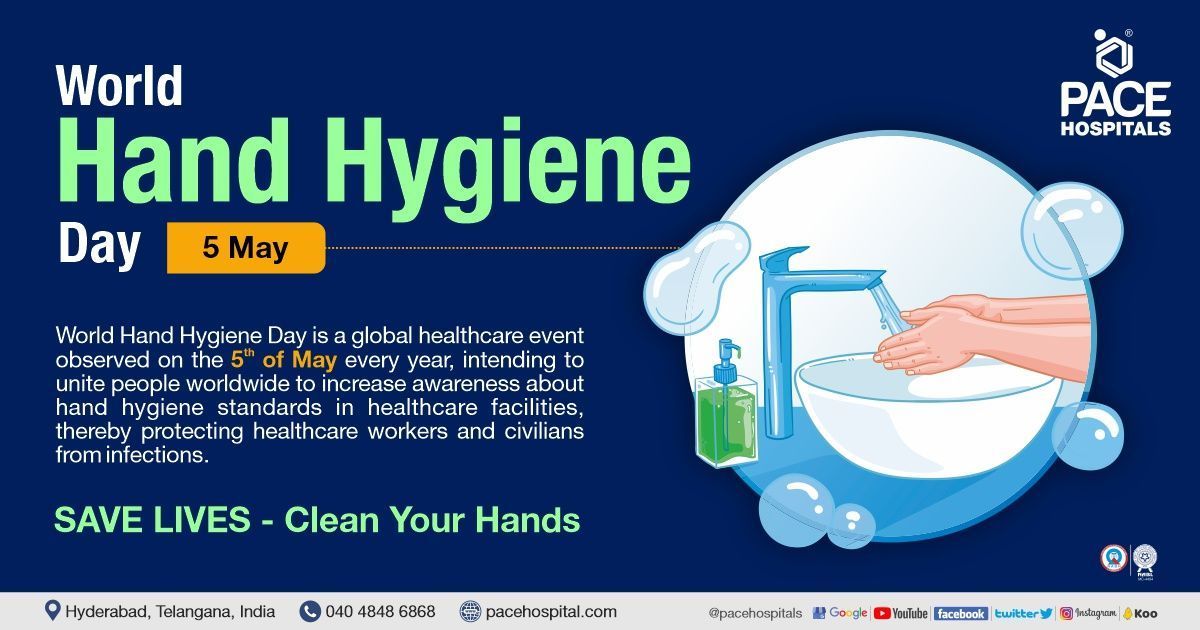
Our Locations
Subscribe to our newsletter and stay updated with the latest health information.
By clicking on subscribe now, you accept to receive communications from PACE Hospitals on email, SMS and Whatsapp.
Subscribe to PACE Hospitals News
Thank you for subscribing. Stay updated with the latest health information.
Oops, there was an error. Please try again submitting your details.
-

Payment in advance for treatment (Pay in Indian Rupees)
For Bank Transfer:-
Bank Name: HDFC
Company Name: Pace Hospitals
A/c No.50200028705218
IFSC Code: HDFC0000545
Bank Name: STATE BANK OF INDIA
Company Name: Pace Hospitals
A/c No.62206858997
IFSC Code: SBIN0020299
Scan QR Code by Any Payment App (GPay, Paytm, Phonepe, BHIM, Bank Apps, Amazon, Airtel, Truecaller, Idea, Whatsapp etc)
Call us at 04048486868
ADDRESS
PACE Hospitals
Hitech City : Beside Avasa Hotel, Pillar No. 18, Hyderabad - 500081
Madinaguda: Mythri Nagar, Beside South India Shopping, Madinaguda, Hyderabad - 500050
QUICK LINKS
Disclaimer
General information on healthcare issues is made available by PACE Hospitals through this website (www.pacehospital.com), as well as its other websites and branded social media pages. The text, videos, illustrations, photographs, quoted information, and other materials found on these websites (here by collectively referred to as "Content") are offered for informational purposes only and is neither exhaustive nor complete. Prior to forming a decision in regard to your health, consult your doctor or any another healthcare professional. PACE Hospitals does not have an obligation to update or modify the "Content" or to explain or resolve any inconsistencies therein.
The "Content" from the website of PACE Hospitals or from its branded social media pages might include any adult explicit "Content" which is deemed exclusively medical or health-related and not otherwise. Publishing material or making references to specific sources, such as to any particular therapies, goods, drugs, practises, doctors, nurses, other healthcare professionals, diagnoses or procedures is done purely for informational purposes and does not reflect any endorsement by PACE Hospitals as such.

